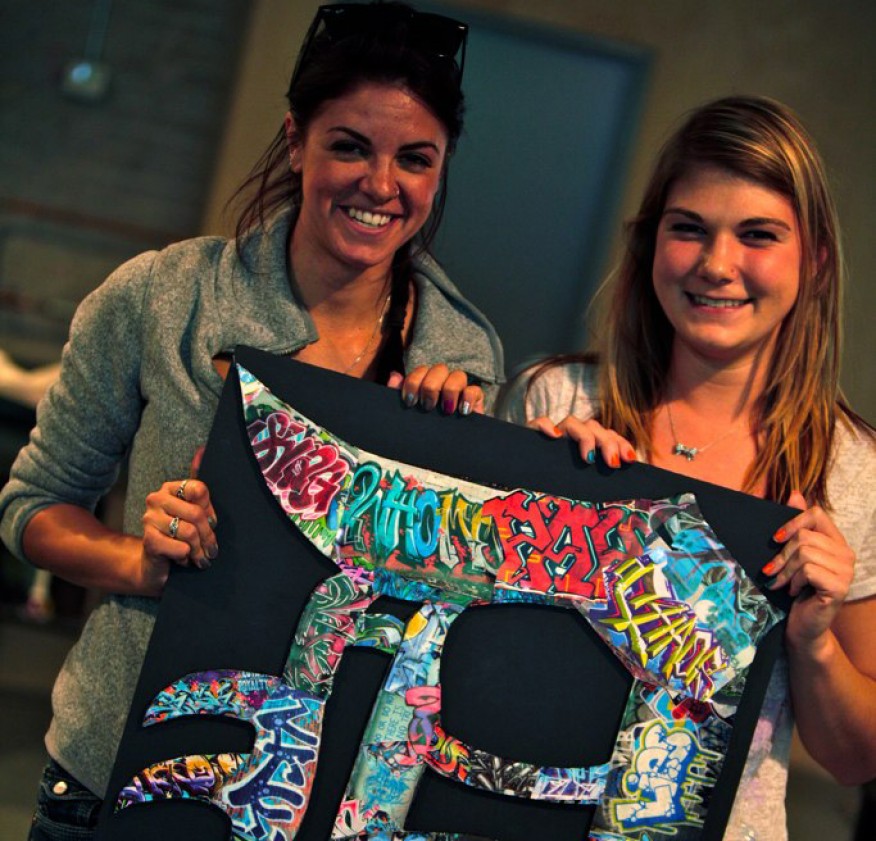“Art brings people together,” said Professor Larry Gant, who has a dual appointment with the University of Michigan’s School of Social Work, and the School of Art & Design. “Art engages a community and helps create social change by giving a voice to the voiceless.”
Social work students, and art and design students are working within the southwest Detroit community using art as a medium to address gang violence. Murals and graffiti are used as a form of communication. Legal murals in the area are used to tell the story of migration from Mexico to America, or to honor sacred figures ranging from the Chilean folk singer Violeta Parra to Frieda Kahlo or the Virgin Mary. Other murals, with aggressive tagging (illegal graffiti) are used by gang bangers to indicate territory wars are ahead. The aggressive tagging is done in the fall and winter, and the territory wars take place in the summer. This pattern of behavior has been going on for decades.
“Art is used as a disrupter in southwest Detroit,” Gant said, “which is good if you know how to read it. Our students disrupt the status quo to promote social change by engaging the community to create legal murals.”
The legal murals are a community project with a role for everyone, whether they’re an artist, or they know how to mix paint. And while this project may be art based, which is a concept that art students certainly understand, the social work students provide the outreach component, which helps bring people together to create the murals. Social work students know how to organize and mobilize people, and art students know how to create art. Working together, these students begin to see possible approaches through the eyes of a different type of training.
“Since working with art students, I’ve learned how to be creative and find solutions to problems in the community,” said Sarah Cohen, MSW ’12. “There’s a big difference working with an art student, because they see through a different lens, just like social work students see issues based on their training. With art students, there’s less linear thinking when approaching a problem and more fluid thinking…more a circle, than a line.”
U-M Adjunct Lecturer Sioux Trujillo has been working with art and social work students in Detroit.
“Community change takes time, patience, community organizing, authentic engagement, careful listening, and hope, Trujillo said.”
“Art is a normalizer,” Gant said. “The finished product is more than the mural, it’s really about getting people together to work on a common project.”
Gant is also working toward a grass roots campaign with the People’s Community Services to create an urban artists’ collective geared toward establishing a social workers enclave. As with most grass roots campaigns, this one has been in the works for years, and a concept, mission and even a location has been developed and identified for Museo del Norte.
Museo del Norte wants to document a history of Latina/os by Latina/os for Latina/os in a space where the stories of their grandparents are honored and new stories are generated from the old. They want a site for the production of art, music, literature, and performance that gives voice to their experience and leads to new ways of imagining the world. But most of all, they want a place of community, where the various paths of their lives can come together in mutual support and respect.
Art is a normalizer. The finished product is more than the mural, it’s really about getting people together to work on a common project.
This idea space and office space will be used by artists and social workers to create a museum. The collaboration of the social work students and the art students is having a lasting effect on the southwest Detroit community. As Museo del Norte moves forward, art and social work students will have another venue to learn and make positive change.
“Civility breaks out in neighborhoods where the murals are located…that’s disruptive…and that’s good,” Gant smiles.
